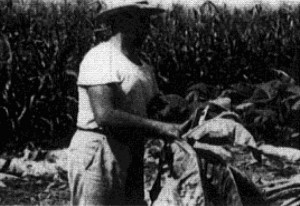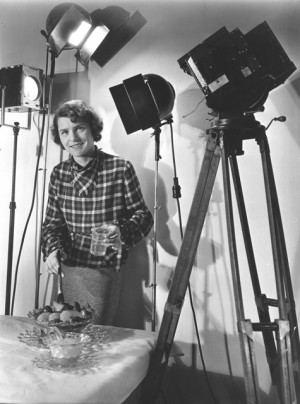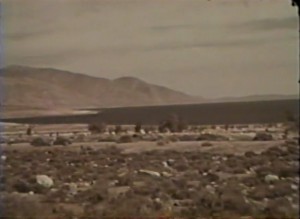"Waters Of Lodore - Unlike most letter carriers who go for a hike on their vaction, letter-carrier Morton and a party of friends set out on a boating adventure down the Colorado river during his 1950 summer vacation. Morton recorded the adventure from start to finish, and edited the footage into an absorbing documentary having many thrilling moments. Although the picture is a little slow getting started -the preparation and get-away sequences being somewhat overly- lenghty -the picture, once the boats get underway, is packed with interest and not a few thrills. It must have been a monumental job making movies on such an arduous journey, for it was often a tough enough job just to keep the boats afloat. Staging the boat action in the rougher waters required infinite patience and camera skill, but Morton has been rewarded with some excellent shots of his fellow-boatmen navigating the dangerous rapids. Morton shot the picture on 16mm Kodachrome at 24 f.p.s., hoping later to combine the narration on a sound print. At present, the narration is recorded on wire and synchronized with the picture." American Cinematographer, May 1952, 224.
"Those who have been in the San Francisco-Oakland district will surely remember the impression made by the harbor and shipping: well, Mr. Fox utilized this as a basic part of his story. Moreover, he utilized a little-known aspect of it — the port of "Ghost Ships" — a section of the harbor in which scores of old, condemned sailing-ships and some old shipping-board steamers, too, are tied up, decommissioned, and slowly rotting, cared for by a few old sailors turned watchmen. Mr. Fox used this background, and, for actors, he chose one of these old sailor-watchmen and his dog. His film was a simple little picture, but more than ordinarily interesting because of the way he wove his background into the story, and the fact that everything combined to make the film natural — believable." American Cinematographer, March 1934, 468.

"The simple ways of life are desired by most of us even in our struggle to get to some other place or environment. The Amish in Pennsylvania have managed to hold onto the good things of the land and simple ways of life. The skills and crafts of these people are brought forth as this film presents its story of their daily activities" PSA Journal, Oct. 1961, 48.
"The Wayward Mink. It is hard to believe, but the plot in this film is exactly the same as in The Boomerang, made by filmers in Montreal. Were it a simple, everyday plot, the coincidence would not be so remarkable, but these two filming groups are over 3000 miles apart. In the Mink as in the Boomerang, a wayward wife accepts a gift from her lover, only this time it is a mink stole instead of Boomerang's necklace. Again, the wife wonders how she can get her husband to "find" it and, she hopes, present it to her. And, to top it all off, what eventually happens to the wayward mink also happens to the necklace. Though the plots are identical, the treatments are entirely different" PSA Journal, Sept. 1966, 36.

"We Are All Artists, traces our experience of the aesthetic in the everyday; it begins by considering the related categories of beauty, art, and craftwork before moving on to suggest some of the many ways that modern art and design have made our world more beautiful. Offering a broad definition of art as any "skillful or purposeful endeavor," the film suggests that we are all artists to the extent that we exercise aesthetic judgement through a range of quotidian activities. The film presents a montage sequence showing a woman cleaning, men painting a wall, a letter being typed, and activities in gardening and pottery and then concludes by proposing that even "exercising the powers of selection" —as in purchasing a hat—makes use of some attributes of the artist" (Tepperman, 237-238).
We Were Two is a black-and-white film done by a serious student of the film and a pretty consistent winner in film festivals, Larry Klubukowski of Stevens Point, Wis. Larry classifies his film as experimental and that it definitely is not a story film. And yet, it's not really an underground film. The filming technique is excellent and you have any choice of conclusions about what the film is about after you've seen it. Perhaps, that was Larry's intention—to get us to think," PSA Journal, Mar. 1970, 44.

Educational short film showing farming in California, and several mines and ghost towns in Nevada.
"Film is a mostly animated cartoon featuring an animated woman and men. The film backdrop often features life images of an old house in winter. The film begins by showing a few pages from the Dec. 7, 1867 'The Milkspur Beacon' newspaper. The woman is in the middle of getting married when she decides to run away. After going back and forth between at least two men, she gets married again" Archives of Ontario.
Total Pages: 299